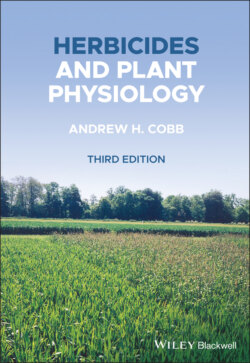Читать книгу Herbicides and Plant Physiology - Andrew H. Cobb - Страница 18
1.4.2 Interference with crop management and handling
ОглавлениеSome weeds can make the operation of agricultural machinery more difficult, more costly, or even impossible. The presence of weeds within a crop may necessitate the need for extra cultivations to be introduced. This often leads to crop damage, reduced yields and increased pest and disease occurrence, although in sugar beet crops, where inter‐row cultivation is often carried out and has previously been associated with yield loss, recent findings suggest that careful implementation can result in no loss of root yield or sucrose content (Dexter et al., 1999; Wilson and Smith, 1999). This is possibly due to the development of tillage equipment that carries out more shallow cultivation and that is more carefully implemented, resulting in less seedling and root damage. Weeds can also affect the processes carried out prior to crop planting. For example, fat hen stems and leaves block the mesh of de‐stoners, which are used prior to potato and other root crop planting. Species with rough, wiry stems that spread close to the ground (e.g. knotgrass, Polygonum aviculare) or are more erect in growth habit (e.g. fat hen, Chenopodium album) present major problems for the mechanical harvesting of many crops and can result in damage to machinery (e.g. pea viners) and subsequent harvesting delays. Other species can be troublesome when the crops are harvested by hand, such as the small nettle (Urtica urens) in strawberries and field bindweed (Convolvulus arvensis) in blackcurrants. The result is that fruit is not harvested and spoils on the plant.
